marvin robinson
Previously: 2008 Offense, 2008 Defense, 2009 Defense, 2009 Quarterbacks, 2009 Offense, 2010 Offense
The series continues with a look back at the defensive prospects in Michigan's 2010 recruiting class. Rich Rodriguez took 16 defenders in the class; more of them failed to make it to the opening kickoff of their freshman year (four) than advanced all the way to Senior Day (three).
I apologize in advance.
Those Who Stayed
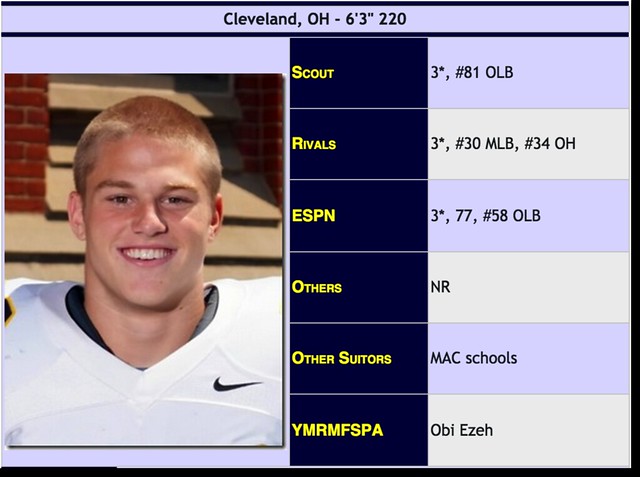
Obi Ezeh!
Especially in retrospect, Jake Ryan's recruitment was bizarre. Ryan was the most productive defender on a state-title-winning Cleveland St. Ignatius squad that got plenty of exposure; he played next to Ohio State commit Scott McVey; his highlight tape provided more than a glimpse of what he'd become at Michigan. He looked a whole lot like Jake MF Ryan, minus the flowing locks.
Yet Ryan went unranked for much of the process, and even after a strong senior season only earned middling three-star rankings. Michigan didn't offer Ryan until he took an official visit a couple weeks before Signing Day. Ryan, holding only MAC offers, committed the next day. Reading his profile today makes me wonder if I unwittingly ingested all of the drugs:
Why Obi Ezeh? Ryan is a big, slightly clunky middle linebacker who will easily reach Ezeh's current 245 pounds and may outgrow the position entirely. As a recruit Ezeh was an anonymous three-star in about the same range Ryan is; he was also a sleeper-type pickup who had not been on anyone's radar before Michigan grabbed him. Ryan is praised for his vertical attacking and dogged for his ability to cut through the trash sideline-to-sideline or effectively cover zones; Ezeh's career is ably summed up by those critiques.
Ryan has some assets Ezeh doesn't: a high school career at linebacker (Ezeh was mostly a running back), a head start on the system he'll be playing in, and Greg Robinson as a position coach. Hopefully he'll have some consistency in coaching as well.
Notably, Greg Robinson as a position coach was listed as a positive. Greg Robinson as a defensive coordinator was... not.
Jibreel Black's profile spent a lot of time hoping he'd become at least a poor man's Brandon Graham. While Black didn't come close to Graham's heights, he was a solid contributor his last three years, and he could've been more productive if Michigan's issues with D-line depth didn't force him into a role as a 275-pound nose tackle for much of his senior season. Black is one of many players from the Rodriguez/Hoke era whose career would've benefited from a redshirt year he wasn't afforded.
The career of Courtney Avery saw him go from promising freshman corner to clearly undersized spot starter to senior utility man—he'd finish his time at Michigan with 19 starts, five of them at safety in 2013. Avery was also a two-time Academic All-Big Ten selection, which shouldn't come as a surprise since he flipped his commitment from Stanford to Michigan; his high school coach thought very highly of him:
“He’s the type of kid that if he wants to be president of the United States one day, he will be. I got two compliments I could give him. That’s the first, and the second is if my daughter was 18, she could date him."
"Thanks, Coach. I'm deeply uncomfortable."
[Hit THE JUMP, if you dare.]
![Marvin Robinson[1] Marvin Robinson[1]](https://mgoblog.com/sites/mgoblog.com/files/images/Exits-Marvin-Robinson-Mike-Jones_87EA/MarvinRobinson1.png)
![600x4145[1] 600x4145[1]](https://mgoblog.com/sites/mgoblog.com/files/images/Exits-Marvin-Robinson-Mike-Jones_87EA/600x41451.jpg)
abs, special teams: out
They're dropping like not-particularly-likley-to-see-the-field flies up in here. Over the last 12 hours, Scout's Andre Barthwell and Sam Webb broke the news that Michigan has lost Marvin Robinson and Mike Jones from the roster.
As departure impacts go, these are near the bottom of the scale. Both were going to be seniors (Jones was a fifth year) and neither was likely to see much playing time outside of special teams. These exits don't affect the two deep or the projected numbers for the 2014 class.
Robinson and his heralded abs never got a foothold on playing time, probably because he never shook the sort of bad habits that made him the primary culprit on that long run a couple of spring games ago where Robinson never figured out the WR he was trying to check was blocking him. He'll have to sit out a year and then he'll have one to play if he doesn't go I-AA. He probably should have moved to WLB immediately upon his arrival at M.
Jones meanwhile was not a touted recruit and never saw the field even when Michigan was scrambling at the WLB spot in 2011. His main on-field contribution was to pick up a dumb personal foul against OSU last year. (Off the field, he provided many opportunities for people to say WHO? because of a rapper who is now ironically forgotten, or at least would be if his song wasn't about his name.)
The main downside is if their absence forces Michigan to play a couple kids who otherwise would have redshirted on coverage teams and the like. If Ben Gedeon plays despite not projecting to the two deep at MLB either this year or next, I'll be a little cheesed off.
Michigan now has a slot for a hypothetical fifth-year QB transfer, say Arkansas transfer Brandon Mitchell. Mitchell who is reported to be considering Michigan along with NC State and three smaller schools. As per usual these guys are leaving to play, though, so unless Michigan can sell Mitchell on a slash role a la Gardner he'll probably head to a place he can at least compete for the starting QB job.
left: Bryan Fuller
Earlier this offseason I stumbled onto an old article where Bill Walsh wrote what qualities he looks for when drafting various positions. Meant to be a one-off on the offense, I took requests for a defensive version and broke it up into D-Line, linebackers, and now, finally, the defensive backs. The idea is since the coaching staff is building a "pro-style" team with principles more akin to the Walsh ideal that dominates the pros than the collegiate evaluations made on scouting sites and the like, we shall re-scout the 2013 roster for Walsh-approved attributes.
Since coverages have changed the most since Walsh's day—a reaction to the spread—this is probably the least valuable of the series. To bring it back on point, I've gone off the page a little bit to note some of the attributes that NFL defensive coaches are looking for nowadays, and what those changes mean.
Strong Safety
Plankamalu / Shazorvacs/ M-Rob if all quarterbacks were Brian Cleary
Walsh Says: 6'3/215. Now hold your horses before going all "SHAZOR?!?" on me—I'm making a point: The type of player you have at safety depends on the type of system you want to run and the type of player you have everywhere else. If you're going to be playing more odd coverages (cover 1, cover 3) then you want your strong safety to be more of a run support guy, in many ways a fourth linebacker. If your base coverage is even (cover 2, cover 4) the strong and weak safeties will be more similar:
"There are other systems of defense where both safeties play a two-deep coverage and only occasionally come out of the middle to support the run. They basically play the ball in the air, the middle of the field and the sidelines. When you do that, then the stress is on the cornerback to be the support man.
So you must keep in mind these various philosophies when considering what types of cornerbacks and safeties you want to put together in forming a defensive secondary."
The attributes of your defensive backs should be complementary. Here's what Walsh is getting at: your backfield has to be able to defend the pass first and the run second. And here's the key: the more you can trust one player to handle coverage without help, 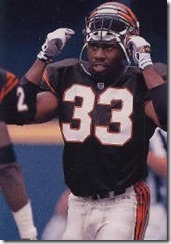 the more you can stock up on extra run defense with the other guys. If your backfield already has plenty of coverage, you can have a strong man:
the more you can stock up on extra run defense with the other guys. If your backfield already has plenty of coverage, you can have a strong man:
"The strong safety is historically the support man. He must have some of the traits you look for in a linebacker. In fact there have been some hybrid players in that position. Cincinnati had David Fulcher [right], who was as big as some linebackers but could function also as a safety. The Bengals moved him weak and strong, inside and outside and he became that extra man that the offensive run game had to account for but often could not block.
…
"But the typical strong safety is someone who can hit and stop people and respond spontaneously and go to the ball. Naturally, the more coverage talent the man has the more you can line him up on anybody."
Today, defensive coordinators sit on porches, remember when you could play a guy like Fulcher, and say "those were the days." The epitome of this type of safety is former Buckeye Doug Plank, who defined his position to such a degree that the defensive system itself was named for his number (46).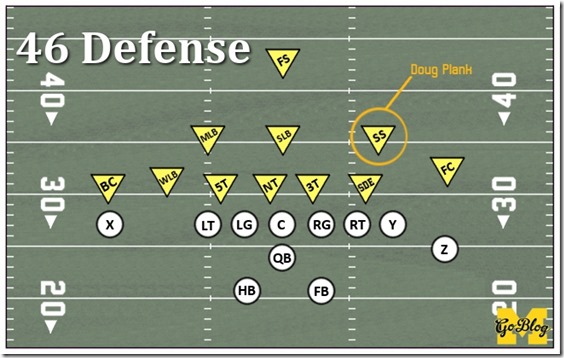
It's also called the "Bear" defense because it was the Bears
This defense was at the height of its popularity when Walsh joined the 49ers in 1979, and it was this defense his model passing concepts shredded. The defense played to Plank's strengths as an overly aggressive, hard-hitting run stopper with some coverage skills. The SAM linebacker in today's anti-spread sets (e.g. the 3-3-5's "Spur") is a closer analogue to the Plank-style player than the modern strong safety, with the key difference being that, as a safety, you couldn't put a blocker on a 46 without removing one from a lineman or linebacker, meaning the SS could flow cleanly to the point of attack and wrack up ridiculous tackle numbers.
College teams loved this, since passing quarterbacks were hard to come by and the big boys were running three yards and a cloud of dust (and later the option). A lot of cool names for linebacker-safeties were passed down from this period, such as the "Wolf" on Bo's teams, or the "Star" (names which today are coming out of retirement for the nickel-SAM hybrid position in base 4-2-5 anti-spread defenses).
Walsh's Favorite Wolverine: Why does a mid-'70s response to off-tackle NFL running games matter to a collegiate defense in 2013? Well because we have a really good free safety, and play tight end-heavy outfits this year in UConn (T.J. Weist, a rare member of the Gary Moeller coaching tree, is taking over there), Penn State, Michigan State, and Iowa, with the outside possibility of a Wisconsin if we make it to the conference championship. Also because the coaches have been subtly putting safety-like objects (Woolfolk, Gordon, and now Dymonte Thomas) at nickel, and recruiting a few linebacker-sized safeties.
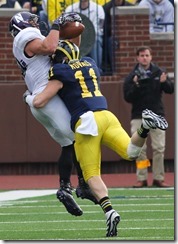 I don't know what he'd think of Kovacs. We loved him, but Jordan had two weaknesses: 1) his lack of overall athleticism made exploitable if left in wide coverage (see: his abusing by Ace Sanders on the last play of the Outback Bowl, and the utter disaster that was GERG's attempt to play Kovacs as the free safety in 2009), and 2) his lack of size made him blockable if a lead blocker could get to him (see: bad things happening whenever Mouton abandoned contain).
I don't know what he'd think of Kovacs. We loved him, but Jordan had two weaknesses: 1) his lack of overall athleticism made exploitable if left in wide coverage (see: his abusing by Ace Sanders on the last play of the Outback Bowl, and the utter disaster that was GERG's attempt to play Kovacs as the free safety in 2009), and 2) his lack of size made him blockable if a lead blocker could get to him (see: bad things happening whenever Mouton abandoned contain).
He would have loved Ernest Shazor, a knife blade listed at 6'4/226 with a scatback's acceleration who loved nothing better than demonstrating the force equation. Brian calls Shazor "the most overrated Michigan player of the decade" because he has to live with the bolded subconscious of UFR, and nothing pisses off a figment of a blogger's imagination like a safety who gives up a big play in coverage.
Here's the point: the ideal safety would be a dude with the size and stopping power to pop a lead blocker and make the tackle or lay out a guy like Shazor, read and react like Kovacs, and cover like Charles Woodson. That human doesn't exist. A combo of epic athleticism with plus headiness and serviceable tackling and size equals Ed Reed or Sean Taylor. Epic headiness with plus size and serviceable everything else nets you Doug Plank, with plus athleticism: Ronnie Lott, Troy Polamalu or Rodney Harrison. The trick is to have epic everything between your safeties; for strongside then it's not Ernest Shazor or Jordan Kovacs; it's SHAZORVACS!
What to look for in a Scouting Report: At either safety position, instincts rate highly and speed after that (less so for the strongside). You're looking to first make sure you have enough coverage in the entire backfield, and once you do you can use this position to stock up on linebacker traits: tackling, size, taking on blockers, personal contribution to local seismic activity, that sort of stuff.
What you can learn on film: Everyone loves those bone-jarring hits and coaches are more than happy to put them in a recruiting video, but not all hits are created equal. Sometimes they're generated by another defender cutting off the lead blocker, other times it's your guy reading the play so early he can go all-out on the hit. More important is what happens to the ballcarrier: he needs to go down. Safeties are going to be left in space, and making that tackle is more important than making the offensive player wish he'd never met this oblong brown thing.
What could signal bust potential: Remember you want a safety, not a horse, i.e. overrating the secondary, linebacker-y attributes and expecting the rest to come along. Adequate coverage and good instincts need to be there or else this guy is just a platoon player. "May be a linebacker on the next level" is a red flag, unless he actually becomes a linebacker. Brandon Smith's recruiting profile is instructive.
It's usually good policy to discount ESPN's opinion when it's in wild disagreement with the other services, but here I tend to give their rip job ($, "he's not a fast-twitch athlete and lacks explosive quickness and speed"; "Takes too long to reach top speed"; "He can be late, takes false steps and doesn't see things happen quickly enough") some credence. Reasons:
- Rivals started off very high on him, ranking him around #50, but steadily dropped him as the year progressed despite his status as a high-profile uncommitted player.
- Despite all the guru accolades Michigan's main competitors were Rutgers and South Carolina; other offers came from Maryland, NC State, Wisconsin and West Virginia. He wanted offers from Florida and Ohio State which never came.
- You always risk looking like a tool when you rely on your super awesome scouting skills and six plays on youtube to discern a kid's fate, but... yeah, I didn't think he was all that.
The guy left in a huff after they tried to wring the last bit of value out of him as a Doug Plank-like extra linebacker vs. Wisconsin, and Wisconsin ground us to dust, but then Smith was a high school quarterback whose development as a defender had to come almost entirely from the Rodriguez-era coaching staff. Anyway you've seen this again and again: rave reviews for the guy's "frame" and a profundity of attributes that would make him seem a really nice horse, combined with not nearly enough "makes plays." First have all of the safety stuff: can read and react, cover, and tackle in space. Then care about the size.
How our guys compare: Jarrod Wilson (6'2/196) remains my favorite to start at this spot because he is adequate (not yet plus) in coverage and the other guys aren't. Like the Jamar Adams he reminds me of, Wilson doesn't stand out in any category but doesn't have any major holes in his game other than being young.
The other leading candidate is Marvin Robinson who scares the hell out of me. He was a big-time recruit early in the process thanks to apparently having an early growth spurt, and his profile was filled with horsey metaphors. The same player still hangs on that frame (he arrived at 203 and never deviated more than 3 lbs from that) and hopes for him hang on the comparative competence in coaching plus the fact that being behind Jordan Kovacs is a perfectly reasonable excuse for not seeing the field earlier.
The redshirt freshmen at this position are stiff and linebacker-ish with instincts, more Plank than Polamalu. Jeremy Clark is all of 6'4/201 and did an okay job against the run in the Spring Game I covered in this space a few weeks ago, but lacks speed. Allen Gant also had instincts praised as a recruit, but also lacks the kind of athleticism and would at best develop into a slightly bigger and less heady Kovacs. If going forward Michigan can develop a superstar at the other safety spot or with a corner, they might be able to Plank it with one of these guys—when Woodson gave us that opportunity in '97, Daydrion Taylor and Tommy Hendricks went ham.
Thomas Gordon is super-instinctive and would be a perfect fit here except he's needed at the more important free position he's been playing.
[The rest, after the leap.]
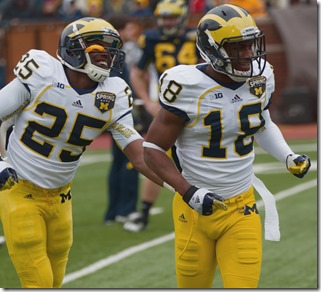
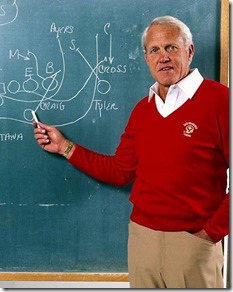
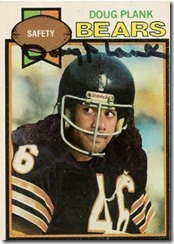
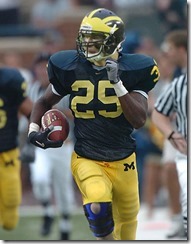
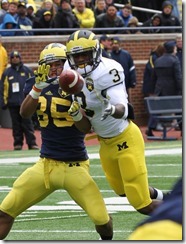
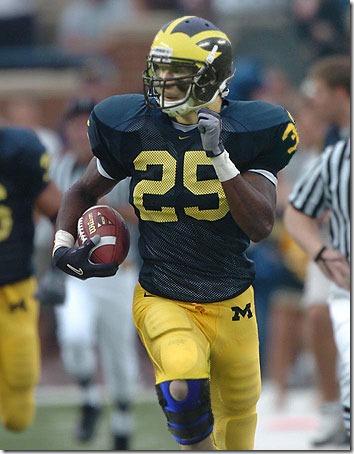
39